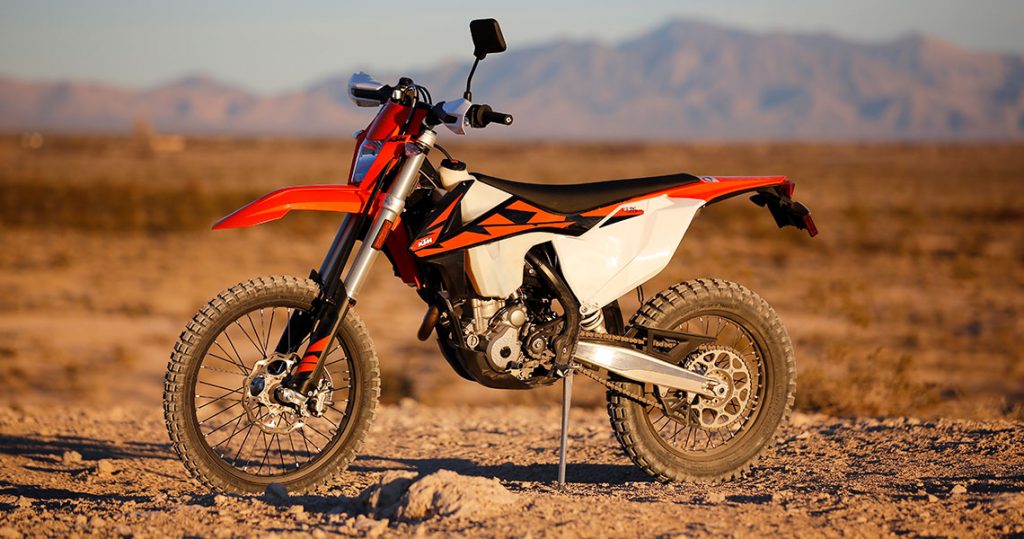 KTM’s Austrian built dual-purpose bikes are an awesome example of getting riders what they want and meeting the regulations and durability standards a motorcycle must meet. With the loss of the XC-W four-stroke, competition riders looking for that bike’s performance criteria are left a little put off by the fully street-legal EXC. But not to worry, DBT will tell you how to get it back without breaking the bank in a few simple steps. There are tons of options for making the EXC into whatever kind of off-road bike you need. We have ridden, raced and tested a lot of them. This is straight to the chase without an internet forum ego or a dyno chart and a credit card reader waiting to cash in, just plain and simple advice that works. Most of these mods or fixes also work on the Husqvarna TE bikes as well.
KTM’s Austrian built dual-purpose bikes are an awesome example of getting riders what they want and meeting the regulations and durability standards a motorcycle must meet. With the loss of the XC-W four-stroke, competition riders looking for that bike’s performance criteria are left a little put off by the fully street-legal EXC. But not to worry, DBT will tell you how to get it back without breaking the bank in a few simple steps. There are tons of options for making the EXC into whatever kind of off-road bike you need. We have ridden, raced and tested a lot of them. This is straight to the chase without an internet forum ego or a dyno chart and a credit card reader waiting to cash in, just plain and simple advice that works. Most of these mods or fixes also work on the Husqvarna TE bikes as well.
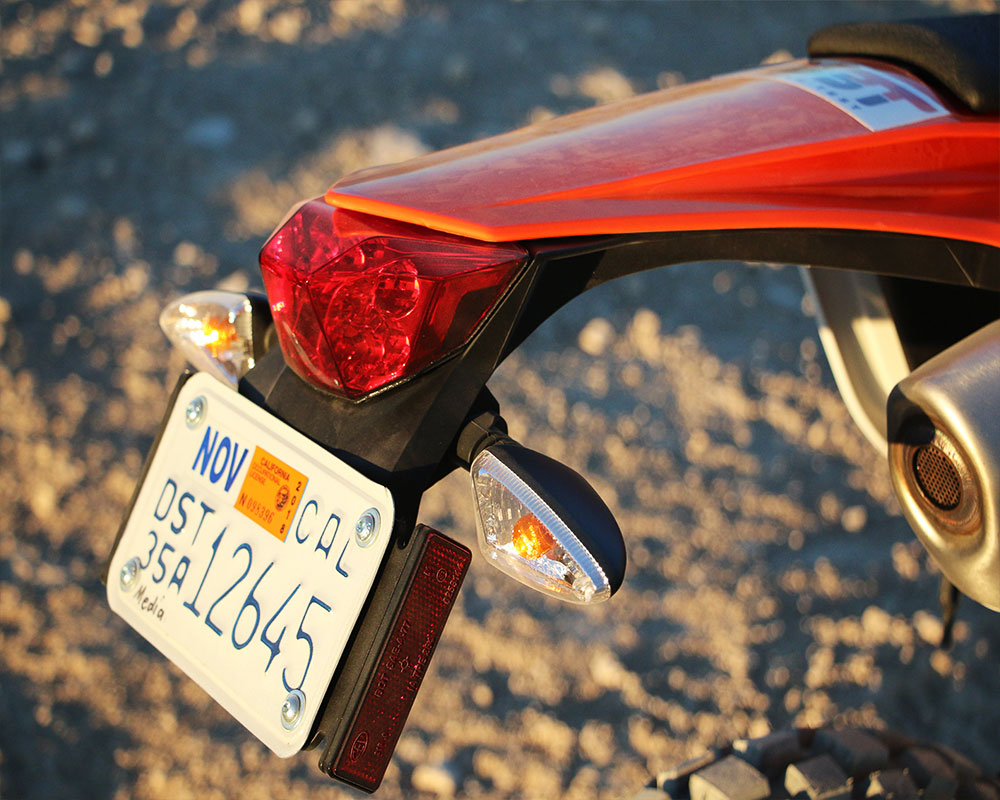
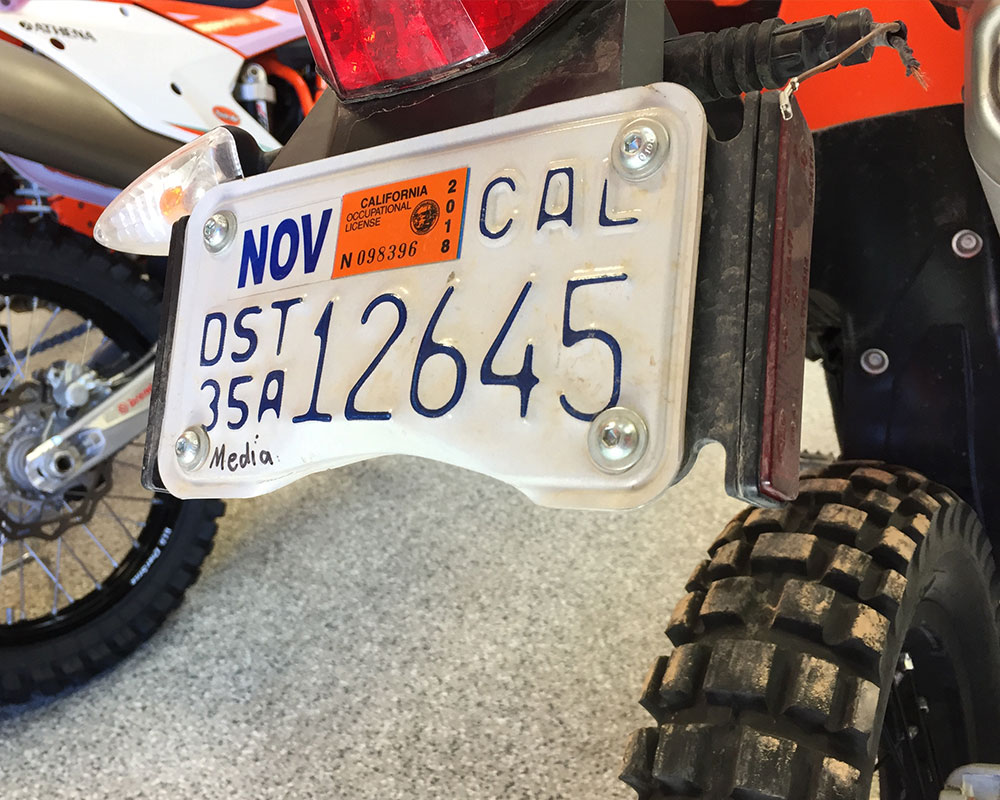
- If there was an area KTM fell backwards on it is the rear light cluster. The 2012-2016 bikes had a nearly indestructible taillight and licence plate holder and the new one can easily get eaten up by the rear wheel due to the less robust rear fender. Cutting weight and keeping that SX style is no easy task. But don’t worry you don’t need to replace the entire tail section straight away. A little trimming of the parts that hang too far down will keep it alive for all but the most aggressive riding or excessive mud-weighted outings.

- The stock mirror is a joke. Take it off before it catches a tree or bush. We love the fold away types and you can’t go wrong with a Doubletake system if you are using the bike where a mirror is required.

- Break in your suspension before you complain or believe an earful from a suspension expert. Take a minute to set it up too. If you are between 170-200 pounds the standard springs will do the job for an average rider wanting to do anything this side of racing the bike. Over or under that weight range and you will likely already know the drill. We found that by setting the bike with roughly 3/4-inch (20mm) of static sag (just the weight of the bike) was a great starting point on any EXC. After that make sure there isn’t any air buildup in the fork before each ride. (We hate the new Torx screw atop the fork, check a Motion Pro bleeder to make this easy)
We had a wide range of test riders ride the bike and the only complaints were during the first five hours of the bike’s life where the unbroken-in suspension has a stiff and choppy nature, especially the fork. But with a little time the WP components start moving freely and most riders asked what we did to fix it. We rode it. The suspension is some of the best set-up bone stock components we have ridden on KTMs and the clickers can easily fine-tune away most issues. And before you send it off to be revalved, try playing with the ride height of the bike to adjust the attitude if you have issues. This bike is very sensitive to a 5mm change in ride height via the sag or the fork height and most riders could feel it and were impressed in how much that altered the feel of the suspension action as well as the handling.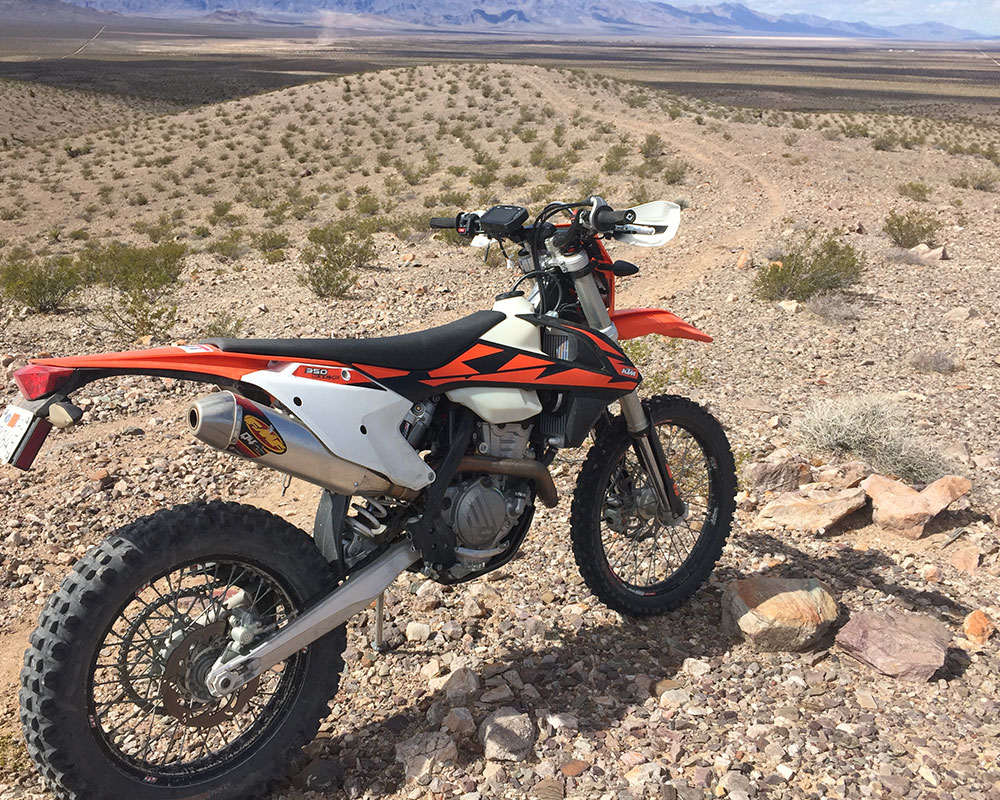
- The stock tires are on the bike for sound. Yes, they are quiet on the road and the loudest feature of the current EXC (since the engine is now so quiet) is tire noise and chain slap. So if you want off-road traction, replace them. There are plenty of great DOT approved knobby tires out there if you need that level of compliance. The minute we wanted to test the true off-road performance of the EXC, we mounted better tires.
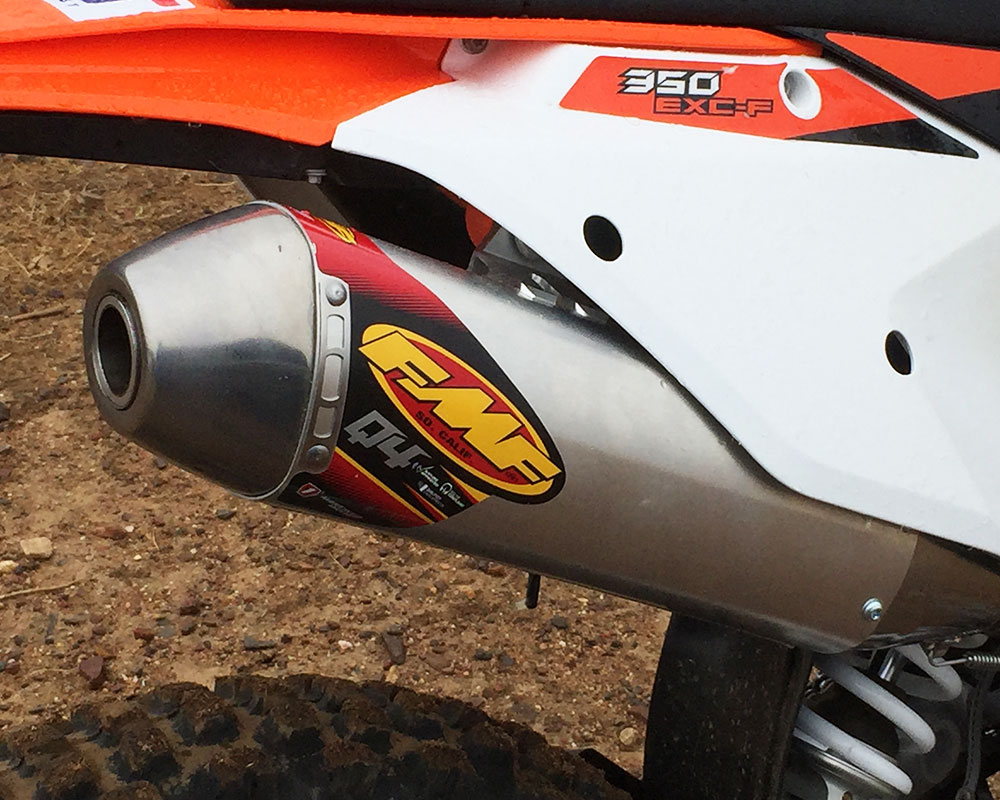
- Get the power you want. This is an area that riders will mess up and do seemingly simple “uncorking” measures but in reality make the bike much louder and harder to ride — even if at some places they feel more power. The engine is designed as a unit from the air filter to the tip of the exhaust to work and pass the emission and sound regulations every street-legal vehicle must pass. You can’t just tear out parts and expect it to run better. Having the ECU flashed to some “Euro” spec or trying to fool it by re-timing the TPS is like putting a band-aid over a bullet hole. The golden rule is that if you change one thing in the system you are affecting every part of it. Here are our suggestions for making work for closed course competition.
We have tried almost every type of these modification on different bikes and we have come to the conclusion that you can make an EXC run as good as an SX or XC if you want to spend the time and money. That power delivery characteristic is not typically ideal for trail, especially in the 0-1/2 throttle range you are mostly riding the bike in. And get over the notion you need all that power by asking yourself a simple question before you start monkeying around with stuff, “Am I using all the power the bike already has?” This is quite simple to answer with your right wrist. Are you holding the bike wide open and wanting more power while you are riding? And how often are you doing this? If you are not using all the throttle there is to twist, the simple answer to getting more power is turn the throttle more and let the bike rev longer. Some might want a different type of power character, more responsive and snappy and for that the cures are actually quite simple.
For racing use the muffler on the EXC bikes is very restrictive and holds a lot of heat. Not only in the muffler but this heat also gets the engine running hot in high strain use. At the very tip of the muffler the perforated end piece is the major culprit for the heat. It isn’t that hard to remove with a few well placed chisel strikes and the sound does not increase that much. The bike will run a slight bit leaner most notable at sea level but it isn’t bad. There is just a slight additional popping on deceleration. Thought the heat reduction is the biggest gain, some additional peppiness is achieved and for most trail riders this was all they needed to take the bike from sewing machine mode to motorcycle-like.
Just swapping our the muffler to a full open muffler will not yield much more than a popping and backfiring motorcycle with a very lean and jumpy power character. We mounted an FMF Q4 with the spark arrestor insert removed onto a stock 350EXC. Sure it had more power but the sound was atrocious and the delivery was short and choppy. The ECU just does not have the capability to add the extra fuel needed and at this point the restricted intake is never allowing the advantages of an open muffler, so this is not recommended. In fact the bike was now slower than the option mentioned below in roll-ons and hill climbs, and even slower than stock at top speed by three MPH.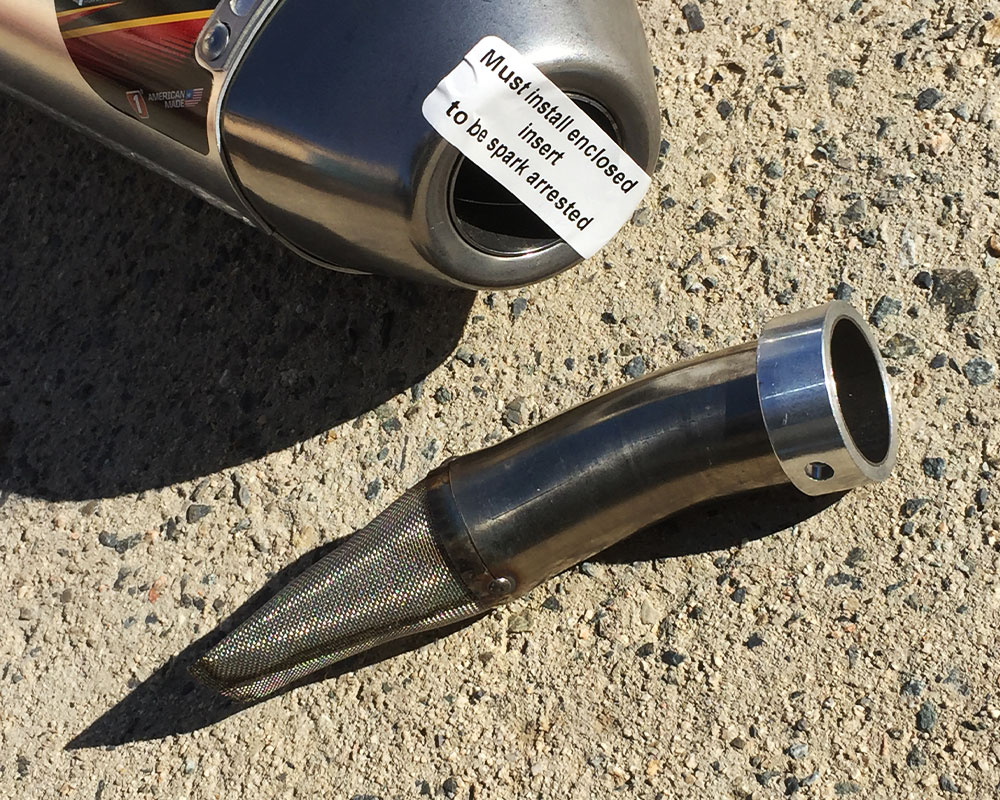
Going down a more sound responsible path we tested the FMF Q4 as intended with the S/A insert installed. It takes a noticeable jump in sound, from roughly 82 dB stationary to 92 db so you now hear the bike running. With just the muffler alone the bike really picks up in pep and throttle response, a step above the stock muffler, but the bike is definitely still in a lean state and needing more fuel to really get the most from the muffler. Without fuel changes you only get about 1/3 of the available performance gain that the muffler could provide. And here is where things can get sideways with lots of “tricks” to richen and open the EXCs up.
If you are looking to make the most power and to have a SX-like power delivery, then explore removing the intake reed valve system, but don’t blame the reed valve, just it’s size. Along with this you will need some extensive modifications to the fuel delivery and in reality an entire new ignition mapping would likely be the best method. When we rode bikes with “stage” this and “internet bro setting” flashed ECUs with and without the reeds removed, none of them ran as clean and smooth as a standard KTM SX or XC and all felt like they were “jetted” incorrectly. All had distinct flat spots or surges in the power delivery at different spots. More power for sure, but at the cost of rideability. And the smaller the displacement of the EXC, the more pronounced the shortcomings were. We never rode a reed-removed bike that ran as smooth as bikes with the reeds left in place. Call it a quiet torque, feel it don’t listen for it. And don’t forget the ECUs on these bikes have a lower rev limiter than on the competition bikes by as much as 3000 RPM.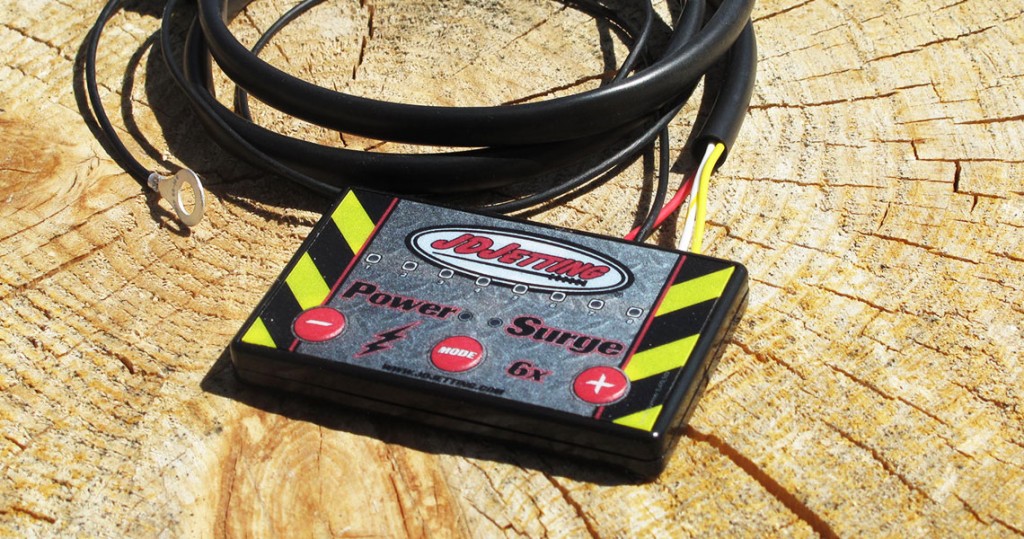
So if you go the route of replacing the muffler the next important step is to add an in-line fuel metering tuner. There are a number of them available and we have had really good experiences with the JD Jetting Power Surge. These tuners allow the enriching and leaning of the fuel mapping outside of the ECU by altering the pulse sent to the injector nozzle. Most of these tuners come pre-set for different levels of modification or instructions on how to set them up based on your bike’s configuration. Plus they allow quick and easy fine tuning depending on a rider’s preference or the conditions. That may be a little out of some rider’s comfort zones (like jetting) and require a few minutes of tuning. In reality the rider’s who are afraid to find out how good their bike can run with a few button pushes on a tuner are also the same ones who waste money on something that doesn’t really work, generally over and over again. The advantage of this over other methods of changing the fuel mapping through the ECU or re-calibration the Throttle Position Sensor is the adjustability in different sectors of the fuel mapping so the bike isn’t consistently rich or completely set up for a different configuration than the one you have.
There are some options for wholesale changing of the ECU to allow full performance of the motor in an unrestricted state. From our experience if you are going to the level of removing the reed valve inside the air box boot you will need another ECU to get true advantages from the additional air flow.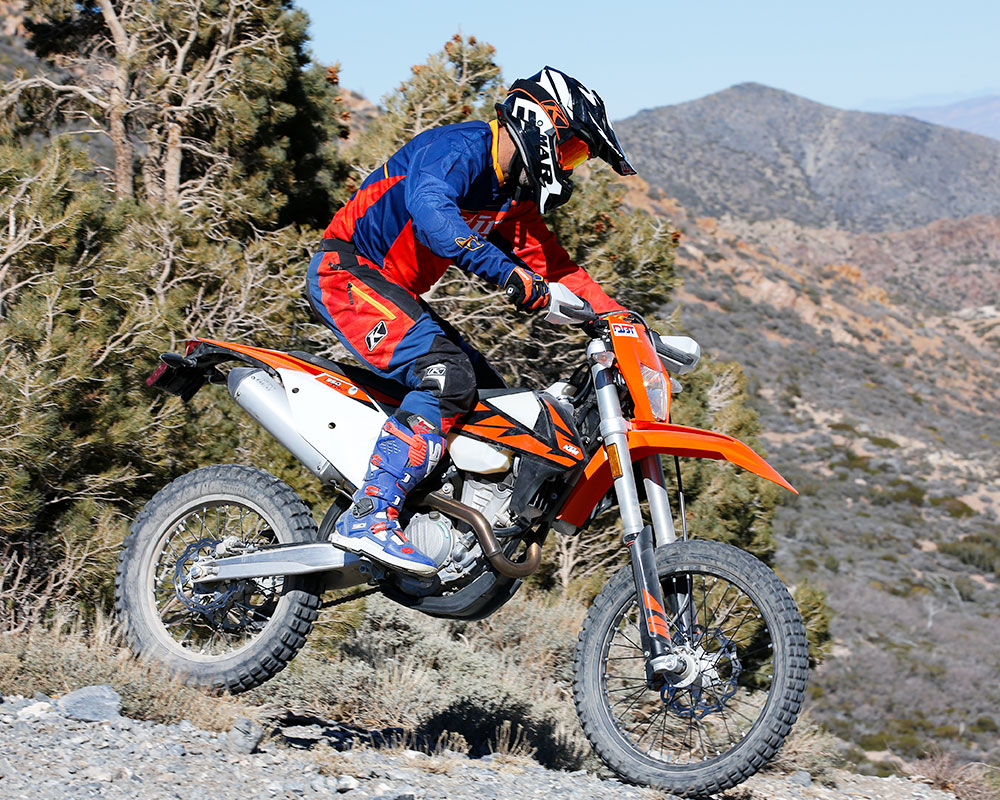


7 Responses to “5 Things You Really Need To Know About Your New KTM EXC (Or Husqvarna FE)”
Sayyed Bashir
Jimmy, I have a 2015 KTM 1190 Adventure R which I rode from CA to your off-road training in Nov 2015. In Nov 2017 I also bought a 2018 KTM 500 EXC-F and love it. I had the dealer put a Rekluse auto clutch and a 4 gal tank for adventure touring. Also installed Doubletake Adventure mirrors. I don’t use it for racing, just light dirt riding but I notice the engine gets hot very quickly. I will remove the perforated end piece on the muffler and hope it is not the spark arrestor as I want to be able to ride USFS trails.
Jimmy Lewis
That piece is not the spark Arrestor. You will be OK.
Jimmy Lewis
The perf is NOT the spark arrestor.
Jimmy Lewis
With EXC you will likely have to play with fuel mapping if you try and do anything to alter the power. There are options (explained in story) but in reality I feel the PDS/EXPLOR fork works better in tighter conditions so I feel the chassis is a better starting point. The XC basically starts out as a full race bike and I would have to tune it in the opposite direction for tighter conditions.
Numbers for horsepower are pretty useless, and unless done under strict controls not good for comparison. When are you wide open with 100% traction loading the engine like in a dyno run? The best looking dyno charts were produced by engines that were unrideable in the dirt. And I know a guy with a dyno that puts out 20% more power than most others. So the answer is that I do not know of any good place to look at this information unless KTM puts out some numbers and you can use those for comparison with a grain of salt.
Gerald Eves
Thanks Jimmy. The reason I was asking is I think I may be right on the cusp of body weight (215 street clothes) for a 250 vs 350. If the 250exc was significantly down on power I’d have to go up to the 350. And I agree with you, the EXC is better for trail/gnarly stuff, and I’m by no means a AA racer. Also, I’m beginning to realize horsepower is fun for an hour or two but is a detriment by the end of the day.
Once again, thanks for all the non-biased views.
Jimmy Lewis
At your weight I’d really push towards 350…
Charles Glasel
Thanks for the article, Jimmy. I have a ‘17 350 that I bought new a couple months ago. I’ve knocked out the screen and added the JD Tuner. Also, the black guide plate on the twist grip made a big difference in engine response.
Honestly the thing has run great straight from the dealer. I hasn’t stalled once (unless I stalled it out.) Getting a little more response has been nice. Being 220 necessitated going up in spring rate front n rear.